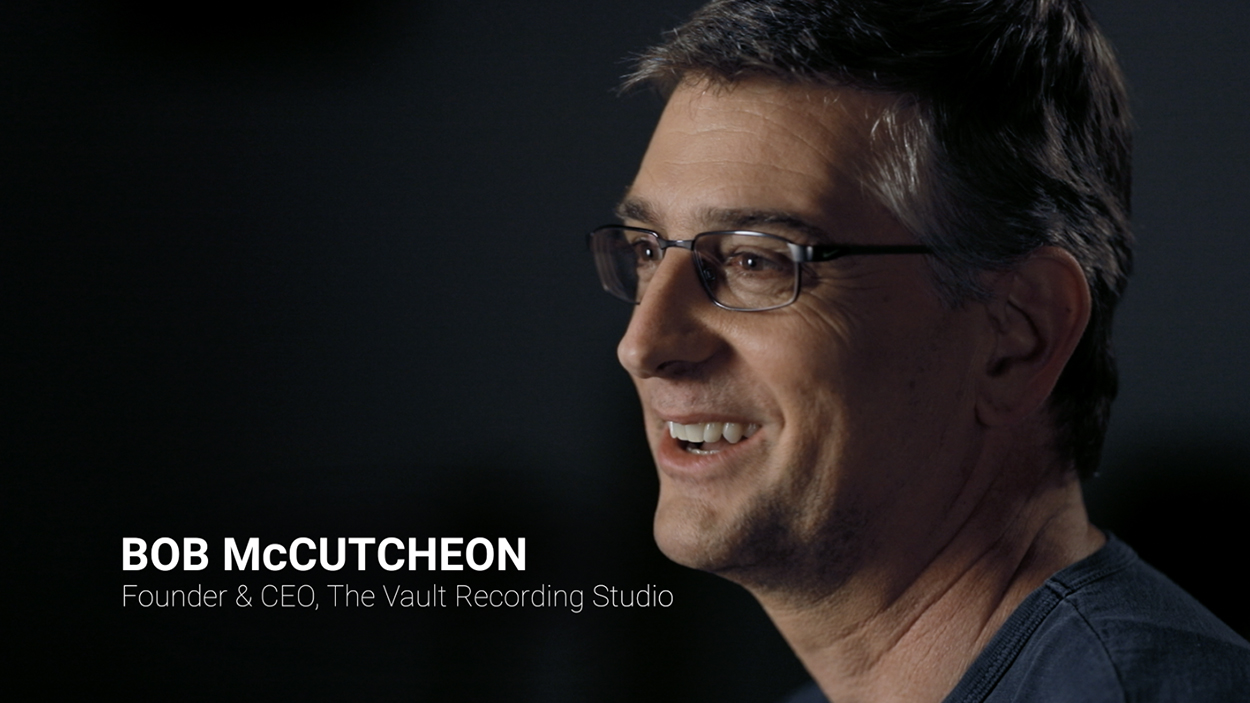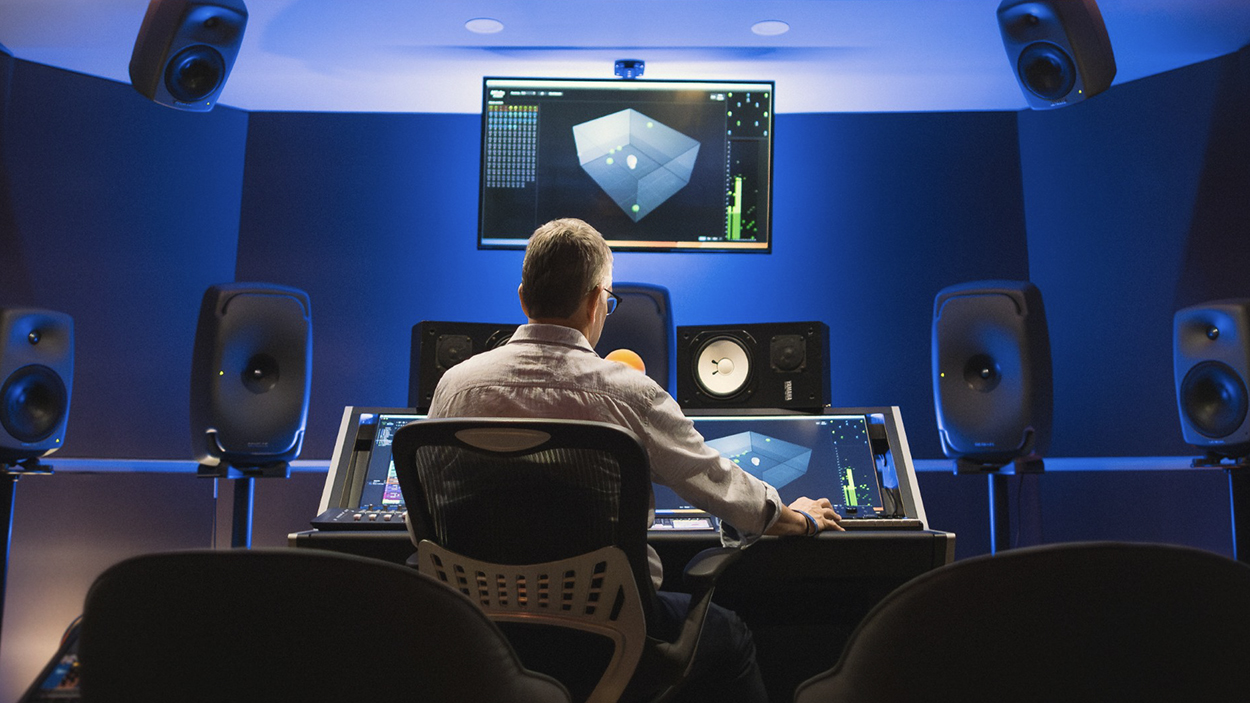Immersive Talk with The Vault Recording Studio
Bob McCutcheon is the Owner and President of The Vault Recording Studios in Pittsburgh, Pa. He is a producer/engineer also with a background in business and finance. He started his first recording studio in 1987, in his mother's basement and garage, while working his way through business school. He graduated from college and immediately started a career in accounting and finance. Over the years he continued to maintain a home studio. As his two sons, Ryan and Brett, got older and develop their own interest in music he began to get more active again. After seeing Dave Grohl’s "Sound City" documentary while on a business trip, he was inspired to build his dream studio. He bought an old bank building, hired an architect from Los Angeles and founded The Vault in 2016. It was originally intended as a personal studio, while working full time as a Managing Partner with PriceWaterhouseCoopers (PwC). After the passing of his 19-year-old son, Ryan, in an automobile accident, he and his wife, Dana, reevaluated and decided it was time to retire, spend more time as a family and pursue his passion for recording. He retired from PwC in late 2018 after 28 years and teamed with up six-time Grammy winner Jimmy Hoyson (Blind Boys of Alabama, Red Hot Chili Peppers, The Goo Goo Dolls and Iggy Pop, as well as Film/TV, 7th Heaven, Ugly Betty, 8 Simple Rules, The Wedding Singer, Ace Venture and Walk the Line). Jimmy was a Pittsburgh native returning after a 30+ year career in LA. He joined The Vault as Chief Engineer after we acquired a vintage (1977) Neve 8058 and decided to run the studio more commercially.

Can you tell us about your studio space? Where its located, any history of the building, the approximate size of the studio?
The studio is located in an old (1955) bank building on Neville Island, on the Ohio River, just outside of Pittsburgh. The main rooms (Studio A), as well as the new Dolby Atmos mix room in (Studio B) were designed by Yanchar Design and Consulting in Los Angeles. We have a third studio as well, that is occupied by Rob Deaner, of V6 Music+ Post, a post-production firm that joined us in 2020. The bank vault is now a fully functioning reverb chamber.
Can you give an overview of the key equipment you use in the studio – consoles/DAW/processors/sound sources/signal distribution etc.?
The main studio is a roughly 1,500sf, multi-room studio centered around a vintage Neve 8058 console, previously owned by Scott Litt (REM, Replacements, Nirvana). Scott had it in LA for years after acquiring it from the original owner, Pete Drake, who was known for his famous talking pedal steel guitar (Bob Dylan, Joe Walsh, Peter Frampton, Jeff Beck). Pete had the console in his Nashville studio where he worked with George Harrison on “All Things Must Pass” and produced Ringo Starr’s “Beaucoups of Blues”.
In addition to the Neve, the studio also hosts the Studer A800 MKIII from London Bridge Studios in Seattle. Used on countless seminal albums in the 1990’s from Pearl Jam, Alice in Chains, Blind Melon, Sound Garden, Temple of the Dog, among others, it is still maintained and operational today.
The monitoring in the main studio includes a pair of Genelec 1038CF, among others with Apogee Symphony 48x48 IO converters.
The new Dolby Atmos mix room was again designed by Yancher Design & Consultants in LA. It was designed and equipped to Dolby specifications. It is a 9.1.4 configuration with 3x Genelec 8361A (LRC), 6x Genelec 8350A on the sides, 2x Genelec 7380A Subs and 4x Genelec 8340A in the ceiling with an Antelope Galaxy 32 converter with both ProTools and Nuendo rigs.

What type of work do you do in your studio?
Studio A is principally a tracking studio with multiple rooms, isolation points, large format console (Neve) and an extensive mic closet and backline.
Studio B, The Atmos room, is both an immersive (Dolby Atmos) as well as a traditional stereo/surround mix room. While our work is principally in music, we also mix commercial and documentary soundtracks as well.
Is there a particular Immersive format you specialize in?
Dolby Atmos
How and when did you become interested in immersive audio?
I became interested in Dolby Atmos in 2020 shortly after Rob Deaner (V6 Music+ Post) joined the team. Rob was working in traditional surround and I loved the “immersive” experience of the surround music Rob was mixing. At the same time, I was actively discussing the latest trends in Atmos with engineer/producer Dave Hillis (Pearl Jam, Alice in Chains, Candlebox, Temple of The Dog) who had recently moved with his family to Pittsburgh and joined our team in 2019.
In 2020, I built a small Atmos setup (7.1.2) in my home mix room as a beta test and began experimenting. I fell in love with the immersive experience and the artistic possibilities that existed with the format. As someone with a business background, I also felt compelled to dive deeper into researching the potential use cases for the format. That led to our investment in the larger format room at The Vault in 2024.
What made you finally equip your studio for immersive, and can you describe how you did the upgrade? If you worked with any external people or had work done on the studio, can you provide some details?
As discussed above, we contacted our original designer, Carl Yancher. Fortunately, Carl had been doing quite a bit of Atmos room design, especially post-covid, and was well versed in the format and required specifications.

Now that you are working in immersive, can you describe how you approach it, how it differs from stereo mixing, and what creative opportunities/challenges it presents?
What I love about immersive mixing is that it is a new frontier with plenty of room for experimentation and pushing boundaries. We are at a moment in time where we get to define the “rules” as we go and not feel constrained by conventional wisdom. One advantage is that the real estate that we are afforded as immersive mixers, is vast. There is plenty of room for elements to be heard. You are not fighting the traditional constraints of stereo. (One caveat… It can also quickly reveal things previously hiding in a traditional stereo mix.) I also like the idea of redefining “center” by moving things from a forward-facing position and placing things more directly into the listening position. The overall immersive feel has to be experienced to fully appreciate the difference, but once you do, it’s hard to go back to stereo.
Can you describe your Genelec monitoring system (format, models etc)? Can you tell us why you chose Genelec, and how the monitoring system helps you to work in immersive?
The configuration was outlined earlier. We chose Genelec after researching a number of brands and configurations. First, Genelec was familiar to us and that is always an important factor in selecting monitors you can trust. They simply sound amazing. They are open and bright, with clarity on the low end and an overall smooth frequency response. We also needed a system that provided the SPL that met Dolby’s specifications for Atmos music. The room is relatively small (approx. 250 sf). The dimensions and ratios were designed by Yancher Designs early on to fit within our space and still meet the room ratios for Dolby. Once we knew the room size and dimensions, we needed speakers that would provide the headroom necessary to meet spec. A number of well-known brands dropped off the list simply because of the lack of SPL.
Did you use GLM (Genelec Loudspeaker Manager) to calibrate your system, and can you describe what difference that makes?
We used the GLM system as the primary calibration system in the atmosphere room. It was easy to set up and extremely efficient. We’ve been very happy with the tuning and calibration as well as the flexibility it has to set up unique calibration settings for multiple listening positions (Mix, Guest, etc…)
Can you list some of the immersive projects you have worked on recently, and is your immersive room bringing you new business? Was it a good commercial decision?
We have been working on a number of up mix music projects for existing clients and have also done some film score work since opening the room a few months ago. We have several composers that have expressed interest in using the room for Film projects, as well as a number of freelance music engineer/producers who haven’t been willing to invested in a room of their own but would like to have access to a local facility when they have client demand for spatial audio mixes. It’s a great room to land a final mix or a secondary reference room outside of their primary mix space. It’s also great for client demos and introducing people to the format.
How do you see the future of immersive audio over the next few years?
The elephant in the room is; What does the future hold and how will the listener ultimately have broader access to immersive listening environments? If left only to home theatre systems and high-end audiophile set ups, I think the format will be greatly limited. But, with a number of streaming services now adopting the format, automakers integrating it into new models, binaural audio for headphones and ultimately VR and spatial video, there seems to be a tremendous amount of tech investment to build out this format. Immersive audio will only grow exponentially as AI, Augmented Reality and Virtual Reality continue to develop. I think we are still in the early stages of development of the use cases. Inevitably, future generations of audio will continue to lean more towards immersive formats in much the same way mono moved to stereo in the late 1950’s to early 1960’s.
Photography by Gregory Neiser.
